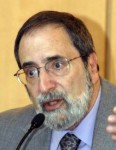By Laurie Baron

SAN DIEGO–Since I love most Coen brothers’ movies, I looked forward to seeing Inside Llewyn Davis. The film’s theme, the folk music revival at the beginning of the 1960s, heightened my anticipation. I fondly recalled my weekly L trips to the Old Town School of Folk Music in Chicago for guitar lessons and weekly hootenannies. I started humming songs by Joan Baez, Judy Collins, Bob Dylan, and Peter, Paul, and Mary from the first albums I ever owned. The glowing reviews Inside Llewyn Davis was receiving raised my expectations even higher.
As a historian, I have to note that the sudden popularity of folk music in the Sixties was not so sudden. The foundations for the folk music revival had been laid by Woody Guthrie, Harry Belafonte, Lead Belly, Odetta, and the Weavers who among others enjoyed much commercial success before the Kingston Trio, Joan Baez, Bob Dylan, and Peter, Paul, and Mary emerged as stars, But this protracted phenomenon doesn’t accord with brothers Ethan and Joel Coen’s narrative about the Bohemian artist eking out a vagabond existence because he refuses to tailor his creations to popular taste. The lean times and lack of recognition are a rite of passage for most aspiring entertainers, not just folksingers.
The story is loosely based on the biography of Dave van Ronk, a fixture of the Greenwich Village folk music scene. Folk music aficionados will recognize van Ronk’s songs “Hang Me, Oh Hang Me” and the opening notes of “his “Cocaine Blues.” Like van Ronk, Llewyn, moodily played by Oscar Isaac, performs in the same coffeehouses that would launch the career of his contemporaries like Joan Baez and Bob Dylan. He, however, resists the temptation of straying from the pristine roots of his music to attain commercial success. The impending fame of Dylan and Peter, Paul, and Mary musically and visually looms within his reach, but eludes him.
As with many Coen brother movies, the vagaries of fate buffet and engulf the hapless Llewyn. Narrow halls converge into a sharp corner or barely afford enough space to walk through. Rides in a car and subway convey a sense of entrapment. On a trip to Chicago, Llewyn listens to the ranting of a jazz musician (John Goodman) before he lapses into a narcotic stupor. The public restroom where Goodman’s character overdoses resembles the hellish hallway in Barton Fink. Llewyn’s attempt to enlist in the Merchant Marine ends up mired in bureaucratic red tape because his sister disposed of his union card in the garbage.
Although brief, there are a few comical Jewish vignettes in the film. Llewyn’s agent Mel Novikoff (Jerry Grayson) may not be as crass as the Jewish movie mogul in Barton Fink but his ethnic origins are indelibly etched on his face and in his New York accent. Mitch and Lillian Gorfein, who let Llewyn occasionally sleep on their couch, epitomize the era’s progressive Jewish intellectuals who patronized folk music and prided themselves on their racial tolerance. A Chinese-Jewish couple they invite for dinner has consolidated their last name into Greenfung.
While Llewyn’s artistic integrity is admirable, his personality is grating. He exploits his friends for a place to crash and seems incapable of maintaining relationships, whether it be with his nagging sister, catatonic father, or the women he has gotten pregnant, one of whom (Carey Mulligan) is the wife of his ostensible friend Jim (Justin Timberlake). He criticizes and heckles other folksingers who perform on the same bill with him. His only constant companion is a cat whom he wants to ditch. To be sure, Llewyn’s prickly exterior masks the loss he feels over the death of his former singing partner, but it is difficult to empathize as much with him than with more affable leading Coen brothers’ characters like the Dude in The Big Lebowski, Marge in Fargo, and Larry Gopnik in A Serious Man. When the owner of Chicago’s Gate of Horn auditions Llewyn, he encourages him to reveal his inner self. Had the Coen brothers disclosed more about Llewyn in the course of the film, his plight might have been more compelling.
*
Baron is professor emeritus of history at San Diego State University. He may be contacted via lawrence.baron@sdjewishworld.com